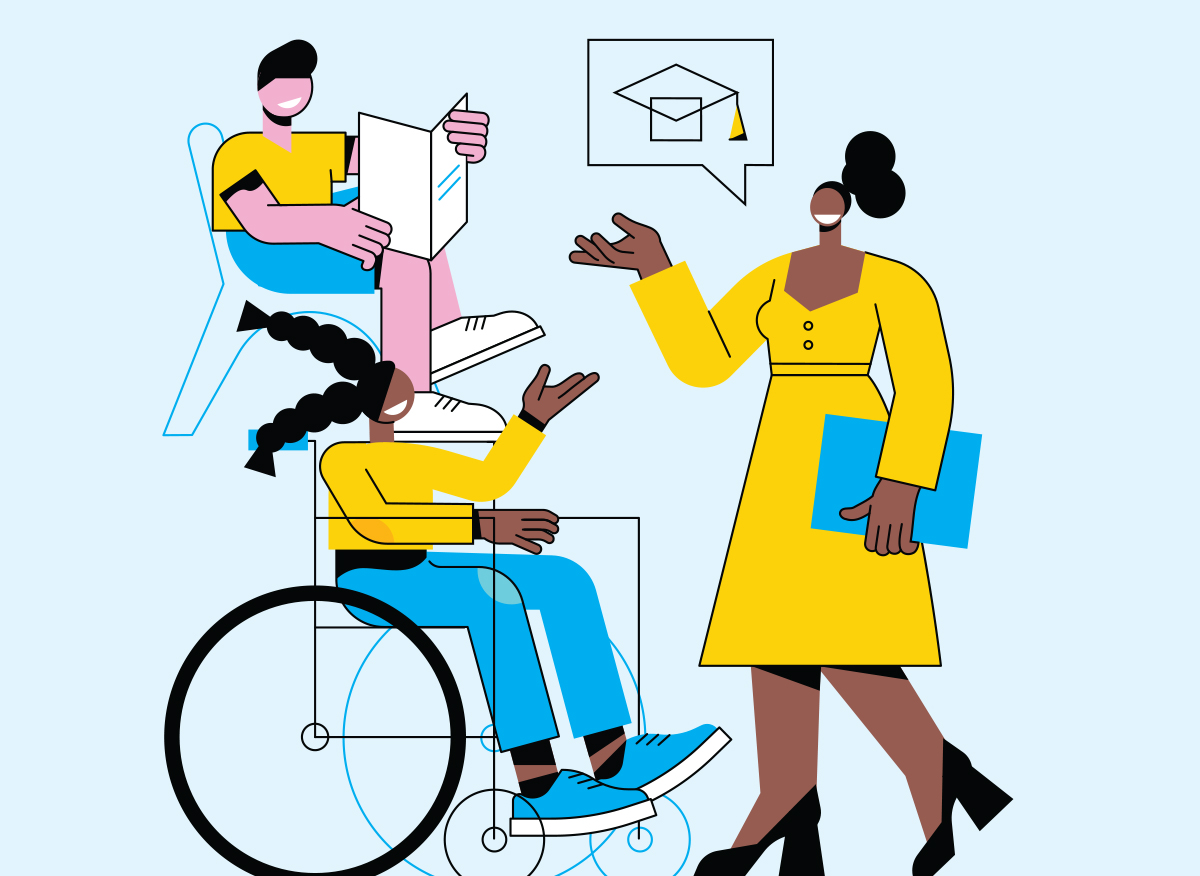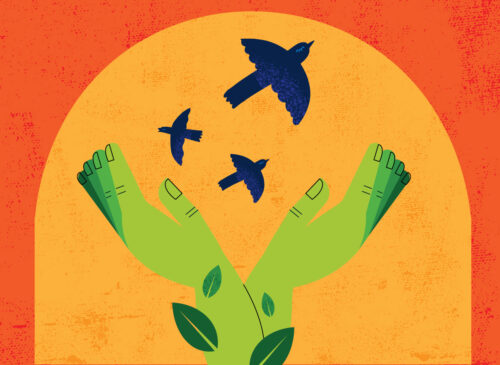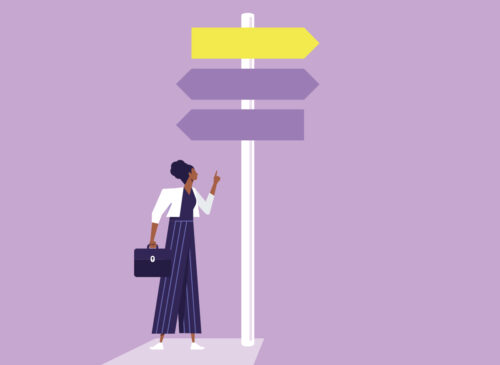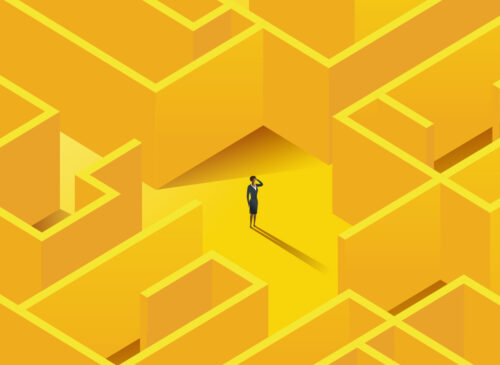What does it mean to truly access an academic space? According to disabled activists and disability studies scholars, universities have a long way to go in making their physical, digital, and cultural spaces accessible to students, faculty, and staff—and they have recommendations for how to do so.

Disabled people may be welcome in academic spaces, but we are seldom actively welcomed. For this kind of active welcome to take place—whether for students, faculty, or staff—institutions must start to think differently about disability. A dominant deficit model constructs disability as a medical problem to avoid, rehabilitate or eliminate. Disabled activists and disability studies scholars argue that this limiting view stifles creativity and prevents full inclusion.
Physical, sensory, cognitive, and emotional differences are normal facets of human diversity, yet stereotypes and stigmas cause people whose differences fall too far outside of the norm to be labelled as burdens on already stressed social support systems.
While daily encounters with ableism and constant self-advocacy tax precious personal resources (emotional, physical, and temporal), experience navigating systemic barriers, attitudinal barriers and nebulous support systems is also generative. Disabled knowledge (aka “crip wisdom”) holds potential to transform antiqued systems in ways that stand to benefit us all.
Disabled knowledge (aka “crip wisdom”) holds potential to transform antiqued systems in ways that stand to benefit us all.
Access as a Legal Responsibility
Human rights laws, such as the Ontario Human Rights Code, compel postsecondary institutions “to recognize the inherent dignity and worth of every person and to provide for equal rights and opportunities without discrimination.” The Code responds to documented histories of systemic oppression and inequitable treatment experienced by people whose bodies deviate from societally constructed norms and ideals. The Code identifies disability as a protected ground, alongside age, race, gender, and sexual orientation, among others.
In 2005, the Accessibility for Ontarians with Disabilities Act (AODA) was adopted, addressing a need for more specific guidance to support equal access and freedom from discrimination. Under the AODA, standards have been created to ensure equal access for disabled people in specific areas of public life, including publicly funded postsecondary education. While the postsecondary education standards have not yet been formalized as laws, a comprehensive report by the Postsecondary Education Standards Development Committee outlines recommendations—including significant changes in attitudes and practices—as well as government and institution funding to support implementation of the standards. In the interim, postsecondary institutions should begin making changes immediately to remove barriers for disabled students, faculty, and staff.
Access as Accommodation
Accommodations represent the dominant framework for access in postsecondary education. The concept of accommodation frames disability as anomalous, extraordinary conditions attached to a minority of individuals. From this perspective, accommodations exist to level the playing field when disabilities (understood as impairments or conditions) create barriers to inclusion or access.
For decades, disabled activists and disability studies scholars have touted an alternative definition of disablement: as systemic discrimination against bodies and minds that deviate too far from societally determined norms. As activist Talila Lewis explains, these norms are not arbitrarily determined: “These constructed ideas [of normalcy, productivity, desirability, intelligence, excellence, and fitness] are deeply rooted in eugenics, anti-Blackness, misogyny, colonialism, imperialism, and capitalism.”
Accommodations, then, compensate not for a person’s impairments, but for dominant systems that were designed to welcome and support a limited range of human diversity.
Access as Work
Under the current legal framework, the work of securing access falls on disabled community members and their allies, taxing already strained resources of energy and time.
Accommodations infrastructure undoubtedly creates more opportunities for disabled students to participate and succeed in postsecondary education. Yet, the construction of disability as an individual deficit places onus on individuals and empathetic others to learn about and seek out resources to support disabled community members’ legal entitlements.
The work of self-advocacy and of navigating systems designed without disability in mind adds to the already onerous day-to-day work of living with disability, which includes managing embodied symptoms as well as environmental and attitudinal barriers. The accommodation model requires that disabled students, faculty, and staff disclose disabilities, adding cognitive and emotional burdens as we weigh the pros and cons of accessing supports in environments that “valorize perfection and stigmatize anything that hints at intellectual (or physical) weakness,” as Jay T. Dolmage writes in the landmark 2017 publication Academic Ableism: Disability and Higher Education.
The work of self-advocacy and of navigating systems designed without disability in mind adds to the already onerous day-to-day work of living with disability.
Furthermore, conditional reimbursement systems require upfront payment for medical documentation to support accommodation requests and for some types of assistive technology, creating both financial burden and risk. These kinds of accommodation-related taxes on personal resources are easily taken for granted when disability is framed as an individual problem. When disability is re-framed to highlight physical, social, attitudinal, and organizational barriers, best practices for supporting access can be re-imagined as well.
When disability is re-framed to highlight physical, social, attitudinal, and organizational barriers, best practices for supporting access can be re-imagined as well.
Access as Universal Design
Accommodations represent a dominant framework for access, but they are not the only option. In a 2018 report titled “Landscape of Accessibility and Accommodation in Post-Secondary Education for Students with Disabilities,” the student-led advocacy organization NEADS (National Educational Association of Disabled Students) advocates for the adoption of a universal design model that is flexible, dynamic, and collaborative, fosters positive relationships, upholds academic rigour, and is tailored to account for the complexities of postsecondary student life.
Universal design upholds the principle that what is necessary for some can benefit many. Designed in part to address accommodation needs, it can also support international students, first-generation students, and many others. Since universal design focuses on the environment rather than the person, it can equally benefit disabled students, faculty, and staff in postsecondary environments.
In an addendum to Academic Ableism: Disability and Higher Education, Dolmage offers a comprehensive list of “places to start:” everyday universal design practices that educators can adopt in different areas of their pedagogy and practice. These topics include:
- Design of lectures and presentations
- Questions and discussions
- Group work, collaboration, and in-class activities
- Large assignments
- Tests and exams
- One-on-one with students
- Laboratory settings
- General suggestions
In all of these areas, universal design can be used to develop more creative and inclusive practices to engage with all students. These universal design recommendations can also benefit faculty and create ways to innovate and change teaching methods to better suit their own abilities.
Access as Collaborative Pedagogy
The accommodations approach frames access as something educators do for students. As a professor teaching undergraduate students, I am learning that access is more art than science; it’s a practice that students, faculty, and staff evolve together. Through efforts to share access-related labour with my students, I am recognizing the collective benefits of creating inclusive pedagogy.
Several years ago, I taught a Deaf student. Their American Sign Language (ASL) interpreters requested that I post comprehensive lecture notes ahead of classes so that they could prepare (i.e., learn new vocabulary). Years later, this practice I adopted to support one student’s access continues to benefit me and all my students. I am better prepared for classes myself when I commit to posting my lecture slides ahead of class. Students with diverse abilities, language skills, and learning styles appreciate this practice as well.
In the fall of 2020 when the COVID-19 pandemic necessitated a shift to remote learning, I advocated for funding to caption recorded lectures. Captions are essential for students with hearing loss, but they can also benefit students with different learning styles and language skills. The practice of captioning recorded content required extra resources: I learned new technology, hired support, and recorded lectures well in advance. At midterm, I polled students to gauge whether the effort was worth it. Many students responded that the captions were extremely helpful—and most of these students did not identify as disabled. The captions supported students who were studying in busy home environments and were better able to focus when they could see the visual text on screen. For others, captions provided a helpful memory aid.
On returning to in-person learning last year, I kept up two other practices I had adopted during the pandemic: using a lapel microphone and taking a 10-minute break every hour. At the end of last term, a student approached me to share that she had no idea how her hearing loss was affecting her learning until she experienced lectures delivered with a microphone. I’ve received feedback that consistently scheduled breaks help students plan to self-accommodate their needs for conditions ranging from pain to challenges with attention. I’ve even come to recognize ways that regular breaks help my own neurodivergent brain manage classroom responsibilities more efficiently.
Small changes such as these cost little and benefit many. For disabled and non-disabled community members alike, access features can help create more equitable access, including—and perhaps especially—for many students who would never know to ask.
Access as Collective Responsibility
When disability is understood as group identity shared by historically marginalized populations, the need to accept collective responsibility for culture change and barrier removal becomes clear. Training can help community members in different staff positions better understand how to address ableism, discrimination, and microaggressions in their roles.
When disability is understood as group identity shared by historically marginalized populations, the need to accept collective responsibility for culture change and barrier removal becomes clear.
The Postsecondary Education Standards Development Committee report recommends training for employee groups including:
- Disability services staff, who can learn to recognize the social and emotional impacts of barriers, and procedures for reporting barriers or seeking recourse.
- Educators, who can learn to create accessible course content and collaborate with librarians to procure course materials that are available in accessible formats.
- Administrators and senior leadership, who can learn about organizational barriers, such as the time and training educators and staff need to provide accessible content and services.
Accepting collective responsibility for access is a core principle of current disability justice organizing. However, as OCUFA outlined in the 2021 Response to the Initial Recommendations for the Development of Proposed Postsecondary Accessibility Standards, appropriate funding is required to compensate university employees’ contributions to access work.
Access as Institutional Responsibility
So long as institutional systems are designed without a full range of human diversity in mind, access and inclusion will require retroactive work.
Responsibility for upholding equity frequently falls to the very people who confront exclusionary barriers and allies who choose to dedicate precious time and resources in solidarity. Until institutions recognize and take seriously their responsibility to make meaningful systemic and cultural change, the time and energy access work requires will continue to exacerbate inequities.
Access as “Crip Wisdom” (aka Disabled Knowledge)
Unlike women, transgender and gender non-conforming people, racialized people and minoritized ethnic or religious groups, disabled people are seldom thought of as a historically marginalized community.
A burgeoning disability justice movement emphasizes the transformative potential in attending to, learning from, and following the leadership of “those most impacted”— people whose shared experience of intersectional marginalization under oppressive and exclusionary systems generates deep experiential knowledge.
Amid the first wave of the COVID-19 pandemic, for example, many people struggled to cope with sudden isolation and disruptions to access and routine. During this time, disabled people with varied experiences shared tips for survival: how to stay connected socially from home, how to support sick loved ones, education on virus transmission, tips for navigating healthcare and insurance, and tools for assessing the quality of publicly available scientific information. On campus, crip wisdom was prepared to inform everything from slowing down to prioritize wellness, to best practices for accessible and sustainable distance learning.
Importantly, crip wisdom extends well beyond the pandemic and virtual classrooms. Disabled people possess highly specialized knowledge about barriers, discrimination, and exclusion. Many of us are equipped with the ingenuity to guide change. Institutions that are genuinely committed to equity, diversity, and inclusion must hire people with lived experience and pay them for their expertise. While paid employment is an important first step, no change will occur without follow-through on our recommendations. Tokenistic inclusion (i.e., including people from equity-seeking groups but not honouring our contributions) does more harm than good.
Many of us are equipped with the ingenuity to guide change.
Access as Culture Change for Collective Liberation
Disabled bodies and minds confront ableism in academic culture every day. Meeting times are planned and changed on short notice, allowed to carry on beyond scheduled timeframes, or to go on for hours without breaks; funding applications, and submissions and revisions for publications demand rapid turnaround time; and workflows and efficiencies take precedence over embodied needs. These norms of academic culture affect inequities and exclusion for disabled community members and many more people.
Adapting and developing practices that ensure no body or mind is left behind must become the standard. Policies that discourage blatant discrimination and place onus on individuals to pursue recourse set a low bar for equity and inclusion. A genuine commitment to changing campus culture to promote equitable access and meaningful inclusion will take work and resources, and those efforts stand to benefit us all.










